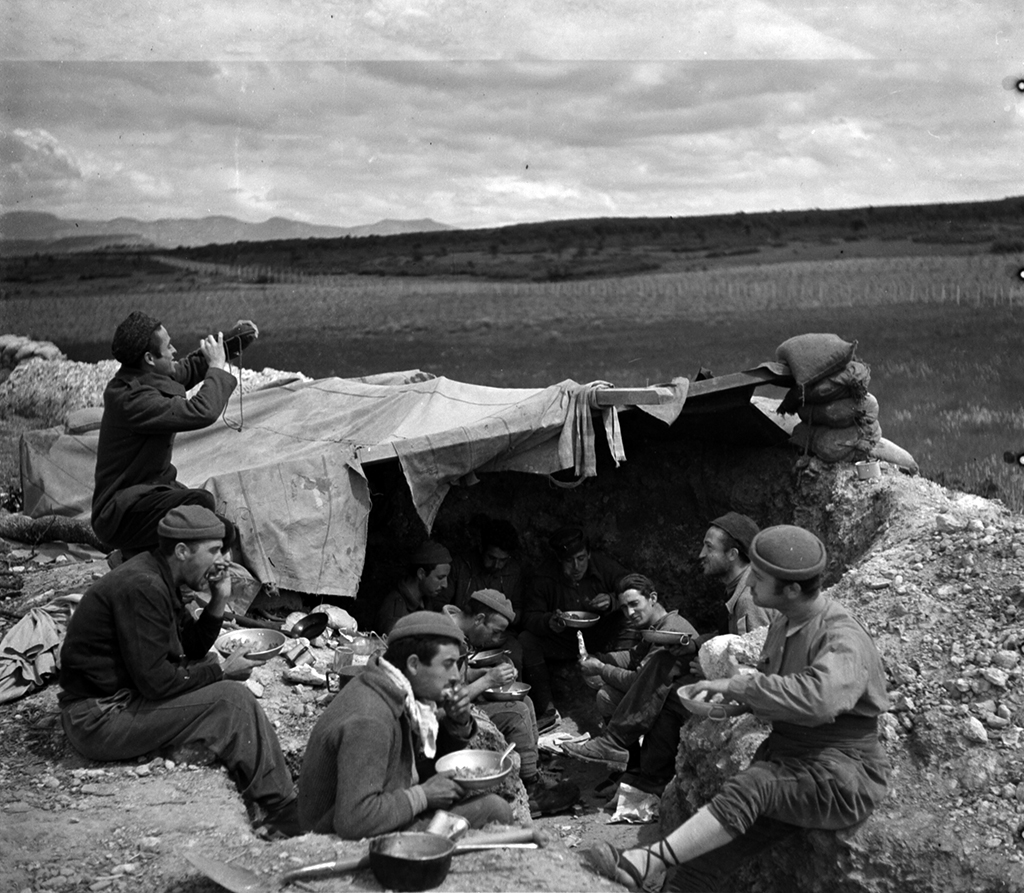Margaret Michaelis and Kati Horna: Female CNT-FAI Photographers during the Spanish Civil War
Research on two Jewish antifascist women photographers from Central Europe: the Hungarian Kati Horna and the Austrian Margaret Michaelis. After leaving Nazi Berlin in 1933 they both ended up in Barcelona during the Spanish Civil War, committed to the anti-fascist and revolutionary struggle carried out by the anarchists of the CNT (National Confederation of Labor) and the FAI (Iberian Anarchist Federation).
Contrary to what was believed until recently, their photographs of the war did not fall into the hands of the Francoists, nor were they lost in the bombings. They were kept in the archives of the CNT-FAI located at the International Institute of Social History in Amsterdam since 1947. The legacy of Horna and Michaelis was identified by Art Historian Almudena Rubio in 2016.
Historical context
At the outbreak of war, the CNT-FAI located its offices in a building on Barcelona's Via Laietana, known at the time as the "CNT house". From the first weeks of the conflict, the anarchists' Foreign Propaganda Office had a graphic section that gave priority to photography as a propaganda weapon. This department obtained and bought photographs from independent reporters, such as the Catalan Antoni Campañà. However, in addition to access to these photographs, the CNT-FAI relied on the commitment and work of two militant women photographers: Margaret Michaelis in 1936 and Kati Horna in 1937-1938. During the war, the legacy of these two photographers was stored and inventoried together with the rest of photographic material in the archive of the anarchists' offices.
Before the end of the civil war, the archives of the CNT-FAI were smuggled out of Barcelona. In January 1939, the anarchists’ memoirs left Via Durruti in 48 wooden boxes loaded onto a truck along with a group of women and children heading for Portbou. Following the hold-up of the material at the border and a long journey with stays in Paris, Harrogate and Oxford, the boxes finally reached Amsterdam in 1947. They were safely deposited in the International Institute of Social History (IISH) to safeguard archives threatened by the arrival of fascism in Europe. Later known as the cajas de Ámsterdam (Amsterdam Boxes), they remained closed for more than thirty years until Franco's death.
The death of the dictator in 1975 allowed the CNT to come out of hiding and access to the anarchists’ memoirs became possible. Shortly after in the 1980s, the archival work and cataloguing of the materials began: Documents, brochures, books, posters, magazines, photographs and negatives and even film shot at the front that had been hidden away for more than 40 years. These materials of the CNT-FAI are the core sources of our histories of the anarchist revolution during the civil war.
While the photos had been digitized and made available to the public already in the 1980s, the photographic and artistic legacy of the anarchist Foreign Propaganda Offices has received little attention. Only decades later, more than 5,500 celluloid negatives, 2,300 photographs and 270 glass plates were brought to light again by Almudena Rubio. Further archival work and research followed, revealing the valuable legacy of two Jewish photographer-militants: Kati Horna and Margaret Michaelis.
Researcher-curator: Almudena Rubio almudena.rubio@iisg.nl
Project: Research, International Exhibition, Photobook
Start: 2020
Result
- “Las cajas de Ámsterdam: Kati Horna y Margaret Michaelis en la Guerra Civil”: Travelling exhibition organized by the IISH together with PhotoEspaña Festival and Diputación de Huesca in collaboration with Fundación Anselmo Lorenzo. The exposition took place in: Academia de San Fernando (Madrid, June-July 2022), Sala de exposiciones Diputación de Huesca (Huesca, September-November 2022) and La pasión, (Valladolid, July-August 2023)
- “Las cajas de Ámsterdam: Kati Horna y Margaret Michaelis en la Guerra Civil” follows the trajectory of the two militant women photographers amidst the social upheavals of 1936 Spain. This exhibition offers a unique insight into the civil war and sheds light on the work of the two photographers who, together with the German Gerda Taro, are recognised today as the most important women who covered the Spanish Civil War. The exhibition brings together photographs taken by Horna and Michaelis in Barcelona, Aragon and Valencia between 1936 and 1937, identified in the IISH. In Michaelis and Horna's photography, a documentary impulse dialogues with avant-garde art photography. It offers a unique vision of the war, expressive of their political convictions. Their life and work converge in the visual narrative, enriched in the exhibition with unpublished documents and press material from the period.
- Photobook/catalogue: “Las cajas de Ámsterdam: Kati Horna y Margaret Michaelis en la Guerra Civil” (Forthcoming)
Media:
- https://www.theguardian.com/world/2022/jun/10/lost-photos-from-spanish-civil-war-reveal-daily-life-behind-anti-fascist-lines?fbclid=IwAR2maADidL25y5kR70r4tw3yaAMkCTv7haNGQ4HOdwcloHmtp7VX1032Mgo
- https://elpais.com/cultura/2020-06-06/la-guerra-civil-de-margaret-michaelis.html
- https://english.elpais.com/elpais/2019/08/23/inenglish/1566551435_700469.html



